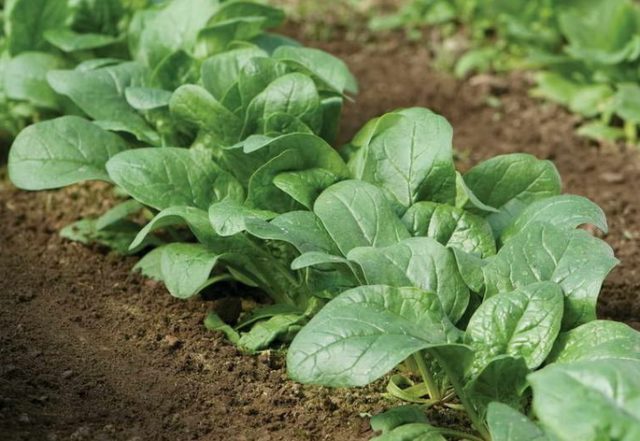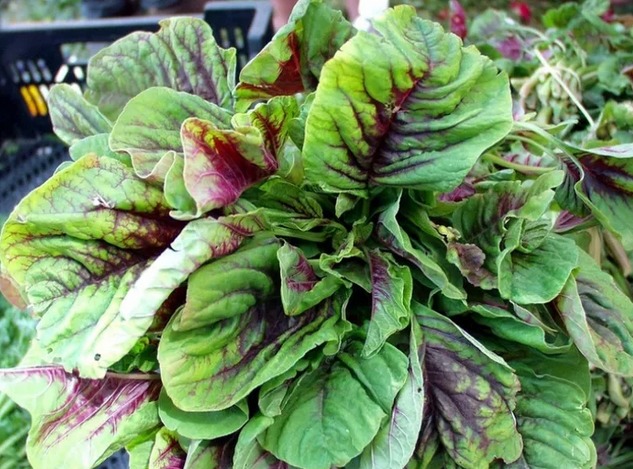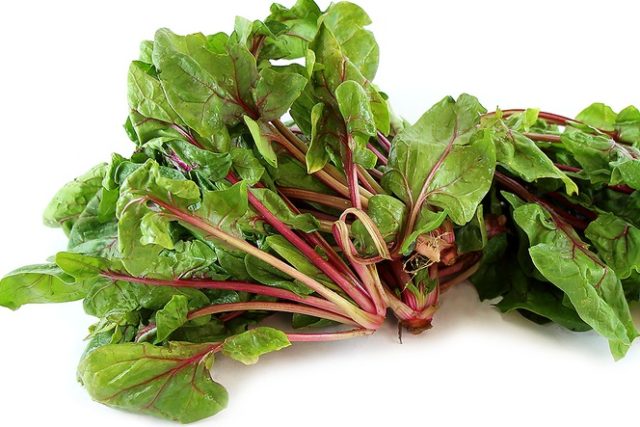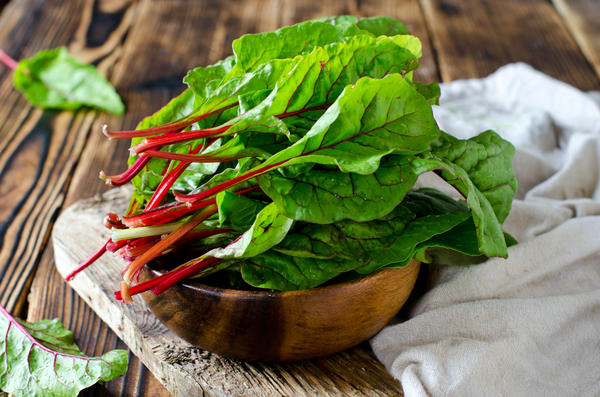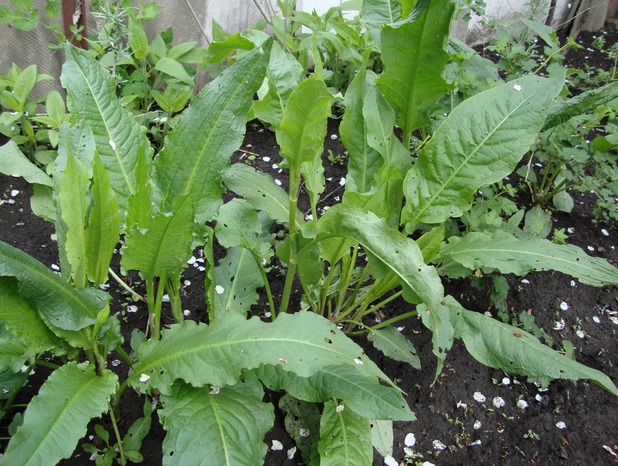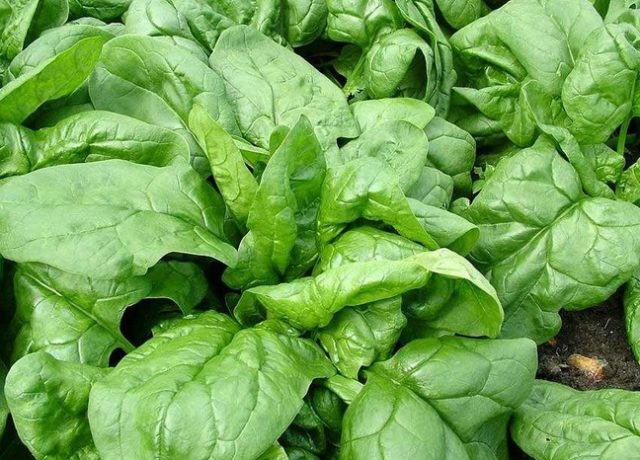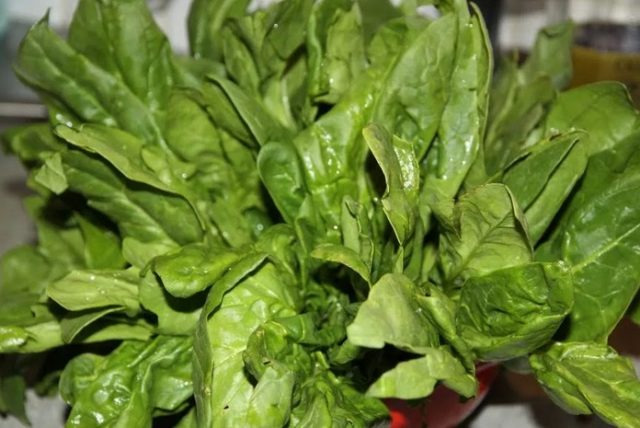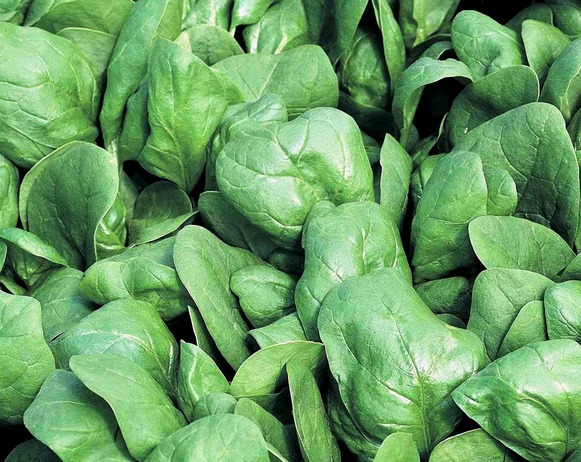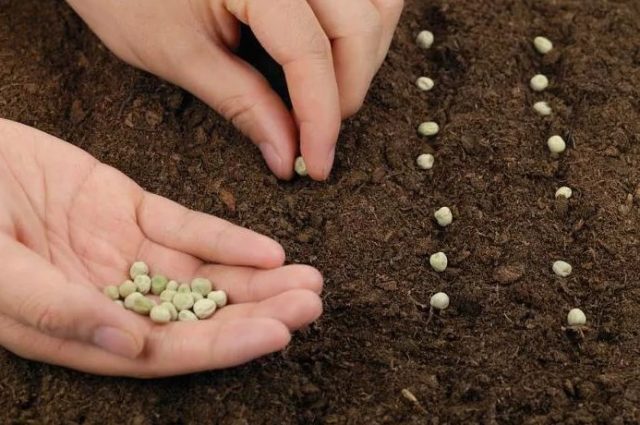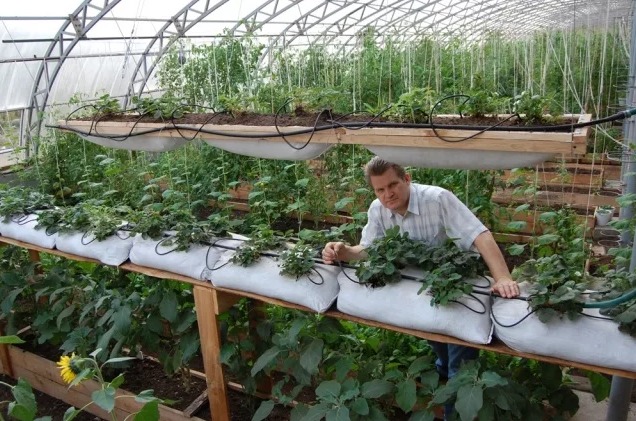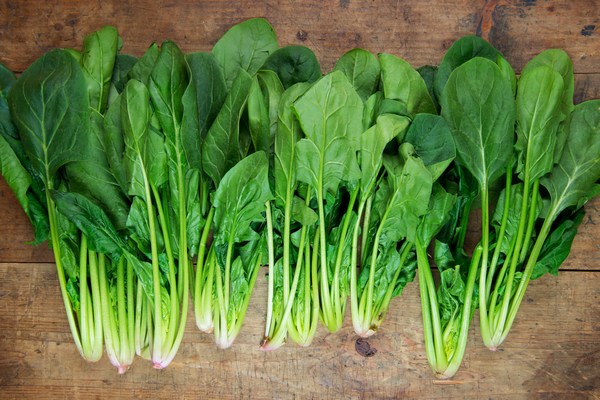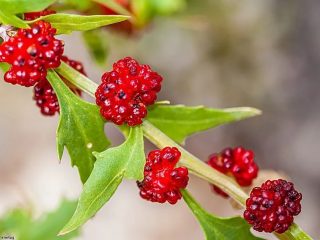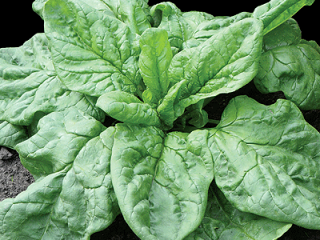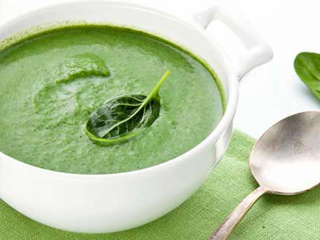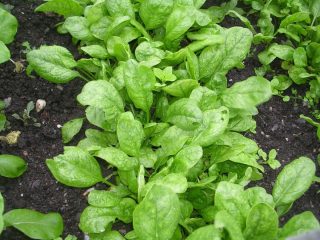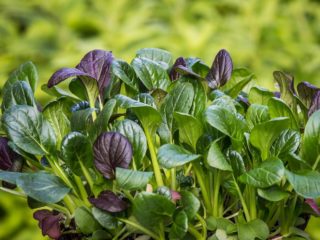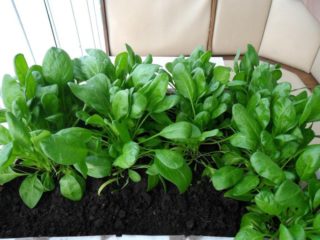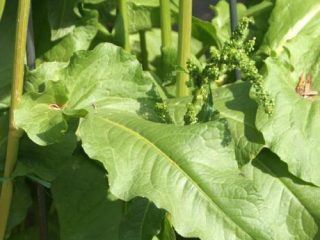Content
- 1 Features and conditions for growing spinach
- 2 Spinach varieties for growing in soil
- 3 When to sow spinach in open ground
- 4 Is it possible to plant spinach before winter?
- 5 How to plant spinach
- 6 How to grow spinach in the garden
- 7 How to grow spinach in a greenhouse
- 8 Growing spinach industrially
- 9 Harvesting
- 10 Reproduction
- 11 Conclusion
Growing and caring for spinach in open ground will be of interest to gardeners who value vitamin-rich greens on their table in early spring. The harvest ripens when there is not a large variety of vegetables. Catherine de Medici, who was in excellent health, asked the court chefs to serve spinach to the table every day. It is believed that it was she who introduced the fashion for this dish in France.
Features and conditions for growing spinach
Spinach is the king of French cuisine and an American favorite. In Russia it is grown less frequently, underestimating the beneficial qualities of this leafy vegetable. The agricultural technology for growing and caring for spinach differs from cultivating other green crops for open ground. It overgrows very quickly and becomes unfit for food.This is a cold-resistant crop that quickly goes into flowering with long daylight hours. Improper care, growing in arid climates and very dense sowing also accelerate bolting.
The plant needs care until it begins to grow. Young seedlings require care - they are regularly watered, weeds are removed, and the soil is loosened. Agricultural technology for growing crops in open ground:
- Grown-up spinach is surprisingly unpretentious in care; it cannot tolerate stagnation of water at the roots and severe drying out of the soil. It develops quickly; early ripening varieties are edible within 2 weeks after germination.
- If the weather is dry, caring for spinach necessarily includes watering, then mulch the exposed, damp soil with sawdust.
- The plant does not need fertilizers while growing in the garden; it is better to underfeed it than to overfeed it. Nitrates easily accumulate in the leaves from excess nitrogen in the soil.
In growing spinach from seeds, pre-sowing soil preparation plays an important role. Caring for the site includes digging, adding nutrients and loosening components.
Spinach varieties for growing in soil
In the Middle Ages, spinach was considered a delicacy. Now it is included in the menu of many diets to strengthen the body and prevent diseases. It contains a complex of vitamins and minerals, amino acids and vegetable fats. There is as much carotene in spinach leaves as in carrots.
It is best to plant varieties that are undemanding in care and easy to grow - they are slow to shoot, resistant to frost, tasty and productive.A description of the best varieties for regions with temperate climates will help you make the right choice.
Spinach
The Zhirnolistny variety was included in the State Register in 1971. It has an average ripening period, the first harvest is harvested a month after emergence. The rosette of green leaves is semi-raised, up to 28 cm in diameter, the weight of one bush is about 20 g, the yield is from 1 sq. m is 2.4 kg. The variety, discovered by Soviet breeders, is distinguished by its good taste, ease of care and resistance to disease. Fat-leaved spinach is recommended for cultivation throughout Russia.
Spinach Giant
The Ispolinsky spinach variety was included in the State Register in 1978. The plant has a compact rosette with a diameter of about 50 cm. The length of the leaf blade is up to 18 cm, width is up to 14 cm, the color is light green, the surface is wrinkled. With good care in open ground, the weight of one plant is 20-28 g. Gigantic spinach has an early ripening period. The harvest can be harvested after 2 weeks of cultivation from the moment of emergence, from 1 sq. m – up to 2.5 kg.
Red spinach
Spinach is not only green, but also red. The veins and petioles of the leaves are the most intensely colored. Varieties of red spinach.
Bordeaux F1 – leaves are green with red petioles and veins. The diameter of the leaf rosette is about 30 cm, the height is up to 20 cm. It grows well when planted in open ground in a sunny place, the taste is sweeter than that of green spinach.
Red Cardinal F1 - a hybrid with green leaves, pink veins and petioles. Undemanding in care, resistant to powdery mildew. The ripening period in open ground is 30-40 days after emergence.
Red spinach is sometimes referred to as a related plant that is grown outdoors, like leafy greens such as chard.
Spinach Uteusha
This is an interesting hybrid of spinach and sorrel, discovered in the second half of the twentieth century by the Ukrainian scientist Yu. A. Uteush. The plant does not require special care; it is grown for salads and soups, and also as a fodder crop. The height of the bushes in summer reaches 2 m. Growing seedlings in a greenhouse gives good results. Then the formed bushes are transplanted into open ground; they can grow in one place for up to 15 years. The plant tastes like a mixture of spinach and sorrel.
Spinach Victoria
The late-ripening spinach variety Victoria was included in the State Register in 1950. The growing period from seed germination to harvest ripening is 19-37 days. The semicircular dark green leaves of the plant are collected in a compact rosette with a diameter of up to 20 cm. The amount of harvest per 1 sq. m in open ground is 2.5-3.5 kg, the weight of one plant is up to 28 g. Spinach is suitable for fresh consumption and heat treatment - preparing salads, soups, sauces.
Spinach Popeye
Papaya spinach is a variety of domestic selection; it was included in the State Register in 2015. The leaf rosette is semi-horizontal, up to 25 cm high, weight of one plant is up to 35 g, yield per 1 sq. m when grown in open ground - up to 3 kg. The leaves are dark green with excellent taste, medium shoots. The variety is early ripening, the crop is recommended for cultivation in all regions of Russia.
Spinach Boa
The hybrid variety Boa was included in the State Register in 2017. It was bred in the Netherlands and belongs to the early ripening hybrids of the first generation. Resistant to cold and disease, suitable for growing in open ground in all regions of Russia.The leaves are oval green, growing on petioles of medium length. The leaf rosette is horizontal or semi-erect, up to 15 cm in diameter, weight up to 60 g. Productivity per 1 sq. m in open ground - up to 1.7 kg. The advantage of growing the Boa variety is late bolting.
When to sow spinach in open ground
Sowing spinach in open ground is carried out from late April to mid-August with an interval of 3-4 weeks. Seeds germinate at a temperature of +4 °C. Open seedlings can withstand frosts down to -5 °C, and adult plants - even down to -15 °C. Thanks to this frost resistance, spinach can be grown on the site throughout the growing season.
Good precursors for growing crops in open ground are the following vegetables:
- potato;
- cabbage;
- radish.
To get the harvest early, you can build a shelter made of non-woven material over the bed. In warm weather, seedlings appear in 4-5 days.
Is it possible to plant spinach before winter?
To obtain an early harvest of spinach in the spring, the best time to plant seeds in open ground is autumn. Winter sowing begins from mid-August to mid-September. Before winter, the seeds need to be sown so that they do not have time to sprout - in November before the onset of persistent cold weather. The crops do not need care in the fall. As soon as the snow melts, the first shoots will appear in the spring. The harvest with this cultivation can be harvested 10 days earlier than from sowing in early spring.
How to plant spinach
When grown in open ground, spinach does not require special care.The seeds are buried 2-3 cm into the soil. Planted in furrows or holes located at a distance of 20 cm from each other. Place 2-3 seeds in each hole. When the shoots appear, the strongest ones are left to grow, and the rest are pulled out.
When planting in furrows, sow at a distance of 2-3 cm; the seeds are large, so it is easy to maintain the required gap between them. The distance between the furrows in open ground is 20-25 cm. If you keep the bed moist during daily care, seedlings will appear about a week after sowing.
Seedlings are thinned out at the stage of two true leaves. A distance of 8-10 cm is left between plants in open ground. Plantings of late varieties with a large diameter of leaf rosettes are thinned out during cultivation as they grow, using young greens for food.
Preparing the landing site
The plant is undemanding to soil and grows in any soil except acidic and heavy soil. To obtain a good harvest, the site is prepared in the fall. The bed is dug up, a bucket of humus and a glass of wood ash are added to each square meter. Deoxidized peat and river sand are also added to make the soil looser and more fertile, suitable for growing crops.
In the spring, before planting spinach seeds in open ground, the area is leveled, compacted and well watered. For sowing, make furrows 2 cm deep, maintaining a distance of 20-25 cm between them.
Seed preparation
Spinach seeds for spring sowing in open ground are prepared in advance. They are covered with a dense shell, so you have to wait a long time for the first shoots. This structural feature allows the seeds to successfully winter in open ground, germinating during the first spring thaw.
To speed up the emergence of seedlings in the spring, before sowing, the seeds are soaked for 2-3 days in water (+30 °C) or mixed with damp rotted sawdust and placed in a warm place for several days.
How to plant spinach in open ground
Spinach is sown in open ground before winter or early spring. This cold-resistant, low-maintenance crop begins to be grown earlier than all other vegetables. The seeds are placed in the prepared furrows, maintaining a small distance between them. Sprinkle soil on top, level and mulch. Water from a watering can between the rows so as not to wash away the crops.
To obtain an earlier harvest in open ground, cover the bed with film. When shoots appear, remove the shelter during the day and return it again at night, protecting it from frost. Seedlings can be grown on a windowsill and do not require special care.
How to grow spinach in the garden
The dates for planting spinach in open ground are in spring and late summer: from April to May and from July to August. The place for growing the crop is chosen to be well-lit with fertile or fertilized loose soils. Caring for spinach in open ground is not difficult - thinning the crops, weeding, loosening the soil, watering.
Watering and fertilizing
When growing spinach in open ground, you need to take into account that it loves water. In hot, dry weather you have to water it almost every day.This leafy vegetable is capable of accumulating nitrates, so it is better to avoid nitrogen and organic fertilizers when self-care and growing in the garden. Organic and mineral fertilizers are applied to open ground at the pre-sowing stage.
Care during industrial cultivation is different. The seedlings are fed with potassium and nitrogen fertilizers at 0.1 t/ha, adding them simultaneously with watering.
Weeding and loosening
After each watering, the row spacing is loosened - such care helps the development of roots and the growth of leaf mass. To reduce the amount of watering and loosening, mulch the beds with humus or compost. When grown in heavy soil that retains moisture and does not allow air to pass through, spinach grows poorly, so deoxidized peat, rotted compost and river sand are added before planting.
Protection from diseases and pests
Strong spinach bushes are rarely affected by diseases and pests in open ground - this makes care easier. Good plant immunity is important because insecticide and fungicide treatments are prohibited when growing leafy early ripening greens. Under unfavorable weather conditions, crop losses are possible. High humidity during frequent rains leads to downy mildew. To prevent fungal infections, it is advisable to treat the beds before sowing with Fitosporin or Trichodermin.
On dry days, spinach bushes are parasitized by leaf aphids, the carrier of the beet yellows virus. During cultivation, it is important to maintain optimal soil moisture. To control pests, it is better to use traditional methods - infusions of onion peels, tobacco, shag, soap solutions, etc.
Yellowing of the leaves and stunting of growth can be caused by improper care - waterlogging or drying out of the open ground, its increased acidity. A mistake is dense planting, placing beets close to beds, which have common pests with spinach - beet nematodes and leaf aphids.
How to grow spinach in a greenhouse
Spinach is easy to grow in a greenhouse for the winter. Seeds are sown from September to February. To speed up germination, they are pre-soaked for 1-2 days. To reduce the cost of crop care, maintain a temperature of +10…+15 °C. Young spinach easily tolerates light frosts. Maintenance in the greenhouse includes weeding, watering, and ventilation on warm days.
In February or March, when it is too early to plant spinach in open ground, they begin sowing seeds in containers. Technology for growing and caring for seedlings in a greenhouse:
- For sowing in a small home greenhouse, take plastic containers with drainage holes at the bottom.
- The soil for growing needs to be loose and nutritious; universal soil from the store will do. It is poured into a planting container and moistened with a spray bottle.
- The seeds are laid out on the surface of the soil in furrows, this makes further cultivation and care easier. You can simply sow, and when shoots appear, plant them in separate containers.
- Sprinkle the seeds on top with a layer of soil about 2 cm.
- Cover the container with a transparent lid or bag and place it in a warm, bright place in a greenhouse. The optimal temperature for germination is +18…+20 °C.
- After 5-7 days from the moment of sowing the soaked seeds, friendly shoots appear.
- Containers with seedlings are left open and moistened as the soil dries.
- Further care consists of watering with settled water using a spray bottle.
After about 2 weeks, you can eat greens of early ripening varieties for food or plant grown seedlings in greenhouse beds.
Growing spinach industrially
You can grow spinach industrially in a greenhouse or open ground. Select high-yielding, bolting-resistant and easy-to-care varieties with early ripening, for example, Boa.
The soil is suitable fertile, loose, with neutral acidity. Preliminary site preparation includes liming the soil, adding compost or humus at 30 t/ha, superphosphate and potassium chloride at 1.5 t/ha. In the spring, the field is harrowed and cultivated before sowing, fertilizing with ammonium nitrate at a rate of 2 c/ha.
When industrially growing and caring for spinach in open ground, planting using a multi-line strip method according to a 32x75 cm pattern is used. The seed consumption rate per 1 hectare is from 25 to 40 kg. When the seedlings have formed 2 true leaves, thinning is carried out, leaving a distance of at least 8 cm between them. Further care in the open ground includes weeding and watering. Net harrowing helps in weed control.
Harvesting begins when the plants form rosettes of 6-8 well-developed leaves. Spinach is pulled out by the roots or cut at the level of the lower leaves. The maximum yield from 1 hectare in open ground is 300 centners. In large fields, a machine with a KIR-1.5 transport trolley is used for harvesting.
Harvesting
It is not advisable to harvest in open ground after rain or watering, so that the base of the leaf rosette does not rot in the place where the leaves are torn off. Plants collected early in the morning better retain their presentation and freshness.
Spinach is an early ripening crop that is very easy to care for. Plantings of some varieties ripen 14-20 days after germination. You should not delay harvesting; overgrown leaves will become rough, and with age they lose nutritional value. The harvest is used fresh, boiled, stewed, frozen and canned. Fresh leaves are stored for no more than 5-7 days, and at a temperature of 0 ° C and 100% humidity - up to 14 days.
You can sow seeds in open ground in the second half of summer to harvest a second harvest in the fall. The space vacated in the garden at the beginning of June can be filled with tomato seedlings.
Reproduction
Spinach belongs to the annual herbaceous plants from the Amaranth family. Easy to care for, propagated by seeds. The hybrid with sorrel Uteusha is a perennial and can be propagated by dividing the bush.
Buy seeds at the store or collect your own. To do this, during care, the strongest and largest plants are left in the open ground. The seeds ripen by August. Plants with seed pods are pulled out, allowed to dry in an open attic, and then the required amount is dried and stored in a dry, dark place until sowing. Seed yield is 45 g/m2. m, they remain viable for 3-4 years.
Conclusion
Growing and caring for spinach in open ground will bring great benefits to gardeners. It is better to grow this crop away from highways and railways.Spinach is easy to care for, ripens quickly, and dishes made from it are healthy and tasty. This leafy vegetable can be grown in open ground, a greenhouse, and even on a windowsill.
